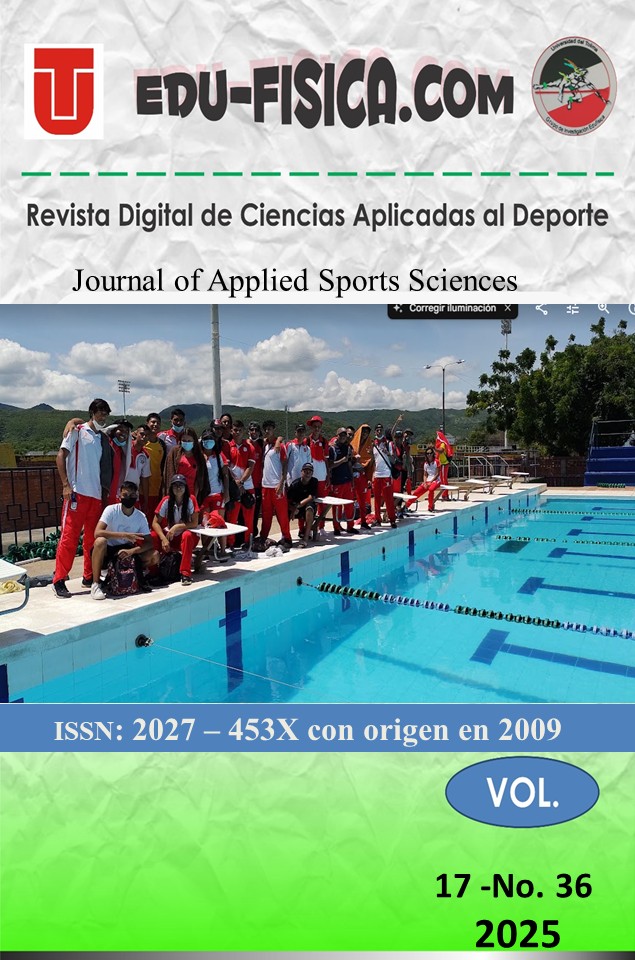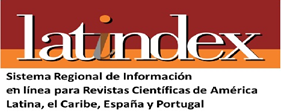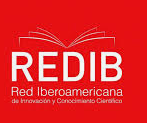ESPORTE DA HUNGRIA SOVIÉTICA – 1949 A 1989
DOI:
https://doi.org/10.59514/2027-453X.3827Palabras clave:
Atividade física, Educação física, EsporteResumen
O objetivo da revisão foi explicar a formação da Hungria e o período soviético dessa nação referente a política e o esporte. A introdução explicou a atuação da Hungria na 1ª e 2ª Guerra Mundial. O artigo é formado por três capítulos sobre a Hungria. A primeira parte informou sobre a formação da Hungria, a segunda parte explicou como foi a política dessa nação durante a sovietização que foi de 1949 a 1989 e a terceira parte informou como era desenvolvido o esporte húngaro durante a sovietização. Em conclusão, o desenvolvimento esportivo da Hungria Soviética era similar ao da URSS, mas através do talento do esportista húngaro, essa nação teve sucesso em diversas modalidades
Descargas
Citas
Agostino, C., e Silva, F. (2015). 1ª guerra mundial (1914-1918). Em. F. Silva, S. Medeiros, e A. Vianna (Orgs.). Enciclopédia de guerras e revoluções (p. 334-342). Vol. 1. Rio de Janeiro: Elsevier.
Almeida, H., Almeida, D., e Gomes, A. (2000). Uma ótica evolutiva do treinamento desportivo através da história. Revista Treinamento Desportivo, 5(1), 40-52.
Andorka, R. (1979). Tendencies of regional development and differentiation in Hungary, measured by social indicators. Quality and Quantity, 13(-), 365-391.
Aquino, R. (2015a). Hungria (intervenções militares). Em. F. Silva, S. Medeiros, e A. Vianna (Orgs.). Enciclopédia de guerras e revoluções (p. 204-205). Vol. 1. Rio de Janeiro: Elsevier.
Aquino, R. (2015b). Eixo, potências do. Em. F. Silva, S. Medeiros, e A. Vianna (Orgs.). Enciclopédia de guerras e revoluções (p. 70). Vol. 2. Rio de Janeiro: Elsevier.
Alexander, L., Atkins, N., e Davis, T. (1973). Hungarian public health. Journal of the National Medical Association, 67(5), 389-391.
Attila, H. (2007). The interplay between innovation and production systems at various levels: the case of the Hungarian automotive industry. MPRA, -(-), 1-36.
Balogh, B., e Fülemile, A. (2008). Cultural alternatives, youth and grassroots resistance in socialist Hungary – the folk dance and music revival. History in Study, 22(1-2), 43-62.
Barreto, J. (1976). Gestão econômica e poder operário na Hungria. Análise Social, 12(45), 64-105.
Baum, S. (1962). The labor force of Hungary. International Population Statistics Reports, -(18), 1-34.
Bentes, J. (2004). Percepção de treinadores formadores acerca da importância do treinamento do passe no futebol. (Mestrado em ciência da motricidade humana). UCB, RJ.
Bertonha, J. (2015). O império Austro Húngaro. Revista Esboços, 21(31), 115-137.
Bognar, J. (1969). Reforma económica en Hungría. Estudios Internacionales, -(-), 107-123.
Bompa, T. (2002). Periodização: teoria e metodologia do treinamento. 4ª ed. São Paulo: Phorte.
Braham, R. (1970). Education in the Hungarian People`s Republic. New York: University of New York.
Braham, R. (1980). The educational system of Hungary. Washington. Department of Education.
Brown, K. (2007). Regulating bodies: everyday crime and popular resistance in communist Hungary, 1948-1956. University of Texas, Doctor of Philosophy.
Bukta, Z. (2018). The nature of Hungarian sport associations after change of the political system. Extraído de: https://www.academia.edu/70544820/the_nature_of_hungarIan_sport_assocIatIons_after_the_change_of_the_polItIcal_system
Calvert, J., Morgan, R., e Sayer, C. (1961). Physical education and sport in the Soviet Union. Leeds: University of Leeds.
Chesham, B. (2021). Flag of Hungary – a brief history. Flagmakers, -(-), 1-3.
Coelho, H. (2010). Portela: um modelo na difusão da periferia. (Mestrado em arquitetura). Lisboa, ISCTE-IUL.
Cseszneky, M., e Riquelme, S. (2018). El lenguaje de la identidad. Hungria en la historia de la civilización. Historia Digital, 18(31), 6-45.
Csányi, T. (2015). History and development of the Hungarian school physical education. Em. N. Zivanovic, P. Pavlovic, B. Antala, e K. Babic (Eds.). History of physical education in Europe I (p. 93-113). Leposavic: FIEP.
Dóczi, T. (2011). Gold fever (?): sport and national identity – the Hungarian case. International Review for the Sociology of Sport, 47(2), 165-182.
Doré, A. (2000). Diplomacia e relação comerciais entre o oriente e o ocidente: duas experiências do século XIII. Tempo, -(10), 1-22.
Donev, Y., e Aleksandrovic, M. (2008). History of rule changes in water polo. Sport Science, 1(2), 16-22.
Enyedi, G. (1982). Part-time farming in Hungary. GeoJournal, 6(4), 323-326.
Fernandes, J. (2005). A memória otomana nos conflitos dos Bálcãs. Nação e Defesa, -(112), 87-102.
Fodor, P. (2017). Erasing, rewriting, and propaganda in the Hungrian sports films of the 1950s. Hungarian Historical Review, 6(2), 3-29.
Fu, X. (2021). O time de ouro húngaro e o carrossel holandês: uma análise dos sistemas táticos. Revista Brasileira de Futsal e Futebo, 13(53), 217-225.
Germuska, M. (2007). The first conversion project of the cold war. The Hungarian defence industry in 1953-1955. In. M. Caplovic, M. Stanová, e A. Rakoto, A. (Eds.). Exiting war: post conflict military operations (p. 281-289). Bratislavia: Château de Vincennes.
Guijarro, A. (2017). Análisis socioeconómico del Império Austro-Húngaro. (Monografia de Graduação). Universidad de Vallodolid, Facultad de Ciencias Sociales, Jurídica y de la Comunicación.
Gyuris, F. (2014). Basic education in communist Hungary. A commons approach. International Journal of the Commons, 8(2), 531-553.
Haba, P. (2012). The architecture of power stations in Hungary between 1945 and 1970 – part I. Architecture, 43(1), 17-32.
Hegedus, J. (1985). La ciência del entrenamiento deportivo. Buenos Aires: Stadium.
Horváth, A. (2017). The educational policy of the soviet dictartorship in Hungary. Civic Review, 13(special), 335-356.
Isaac, J. (2017). Breves reflexiones sobre la existencia o inexistencia de feudalismo en el reino de Hungría (siglos XI-XV). Historia Digital, 17(29), 108-123.
Jederán, M. (1983). Role of technical university, Budapest in the development of education and research in textile mechanics in Hungary. Periodica Polytechnica Mechanical Engineering, 27(4), 187-195.
Karácsony, R., e Vukoszávlyev, Z. (2018). Teaching modernism. A study on architectural education in Hungary (1945-60). In. M. Melenhors, U. Pottgiesser, T. Kellner, e F. Jaschke. (Eds.). 100 years of Bauhaus (p. 331-343). Hochschule: German National Library.
Karácsony, R.; e Vukoszávlyev, Z. (2019). Architectural education in Hungary from 1928 to 1948 according to the contemporary specialised press. Symmetry: Culture and Science, 30(4), 295-312.
Karady, V. (2014). Les inégalités ethniques et confessionnelles dans les performance scolaires des bacheliers em Hongrie (1851-1918). Histoire e Mesure, 29(1), 167-194.
Kojrowicz, C. (2005). Los primeiros inmigrantes polacos provenientes del Imperio Austro Húngaro. X Jornadas Interescuelas/Departamentos de Historia, -(-), 1-15.
Kovács, M. (1996). Ambiguities of emancipation: women and the ethnic question in Hungary. Women`s History Review, 5(4), 487-495.
Kovács, J. (2016). The struggle for land: social practices of the veiled communist dictatorship in rural hungary in 1945. In. R. Kiss, e Z. Horváth, Z. (Eds.). Neb Yearbook. Budapest: Committe of National Remembrance.
Kovács, Z., Egedy, T., e Szabó, B. (2018). Persistence or change: divergent trajectories of large housing estates in Budapest, Hungary. In. D. Hess, T. Tammaru, M. Ham (Eds.). Housing estates in Europe (p. 191-214). Switzerland: Springer.
Lasunción, F. (1971a). Escuelas deportivas en Hungría. Apunts, 8(31), 141-150.
Lasunción, F. (1971b). Escuelas deportivas. Apunts, 8(30), 91-96.
Latour, P. (2013). Etude de l`industrie automobile en Hongrie. Wallonia, -(-), 4-26.
Lopes, S. (2011). Nós somos húngaros! O reavivamento das tradições húngaras. (Dissertação). UNIVILLE.
Lucena, S. (2008). Igreja cristã reformado do Brasil identidade étnica e religião: um estudo de caso. (Dissertação). Mestrado em Ciências da Religião, Universidade Presbiteriana Mackenzie.
Luparello, V., e Fabry, A. (2021). Productoras y reproductoras: un análisis del papel de las mujeres en la industrialización de la Hungría socialista (1948-1956). Investigaciones Feministas, 12(1), 157-167.
Mariño, J. (1981). La invasión de Hungría. Tiempo de Historia, 7(83), 66-87.
Marques Junior, N. (2021). O esporte na antiga Iugoslávia – parte 1. Revista Edu-física.com: Ciencias Aplicadas al Deporte, 13(27), 80-100.
Marques Junior, N. (2022a). Esporte da Polônia da “cortina de ferro”. Revista de Investigación Cuerpo, Cultura y Movimiento, 12(1), 1-26.
Marques Junior, N. (2022b). Escola soacialista do treinamento esportivo: a preparação do atleta. Revista Actividad Física y Ciencias, 14(1), 56-75.
Marques Junior, N. (2022c). O esporte na antiga União Soviética – parte 2. Revista Edu-física.com: Ciencias Aplicadas al Deporte, 14(29), 80-101.
Marques Junior, N. (2023). O esporte na antiga Iugoslávia – parte 2. Revista Olimpia, 20(4), 75-96.
Marques Junior, N. (2024a). Formação da Alemanha Oriental – parte 1. Revista Olimpia, 21(2), 1-29.
Marques Junior, N. (2024b). O regime político da “cortina de ferro”: a sovietização. Niterói: s. ed.
Marques Junior, N. (2024c). Structuring of the periodization in antiquity: the Roman military training. Tanjungpura Journal of Coaching Research, 2(1), 1-12.
Marques Junior, N. (2024d). Esporte da Alemanha Oriental – parte 2. Revista Olimpia, 21(2), 72-86.
Marques Junior, N. (2024e). Periodização de cargas seletivas aplicada no voleibol. DeporVida, 61(21), 109-127.
Melo, T. (2020). Respondendo às ameaças: a crise da anexação da Bósnia e Herzegovina (1908-1909) entre a Áustria-Hungria e a Rússia na península Balcânica. Mestrado em Ciência Política, UFG.
Meusburger, P. (1997). Spatial and social inequality in communist countries and in the first period of the transformation process to a market economy: the example of Hungary. Geographical Review of Japan, 70(2), 126-143.
Molina, F. (2017). O desenvolvimento econômico da Hungria após o fim do regime comunista segundo a perspectiva da economia política internacional. Monografia de Graduação, UFSC.
Molnar, G. (2007). Hungarian football: a socio-historical overview. Sport in History, 27(2), 293-317.
Molnar, G. (2023). Natiolism and sport intersection in Hungary: building fences, expanding nationhood. National Identities, 25(4), 305-322.
Nádori, L. (1989). Theoretical and methodological basis of training planning. Em. T. Hortobágyi (Ed.). Theoretical and methodological basis of training planning with special considerations within a microcycle (p. 1-25). Lincoln: NSCA.
Nagy, A. (2001). Casas prefabricadas en Hungría. Boletín de Información Técnica, -(213), 26-29.
Nuusztau, L. (2012). De la modernización comunista a la modernizacion liberal: el caso de Hungria. Puente Europa, 10(1), 47-64.
Nyyssönen, H. (2006). Salami reconstructed: “goulash communism” and political culture in Hungary. Chahiers du Monde Russe, 47(1-2), 153-172.
Oliveira, H. (2007). A Hungria entre duas guerras mundiais. Lusíade, 4(63), 13-63.
O`Mahony, M. (2006). Sport in the USSR: physical culture – visual culture. London: Reaktion Books.
Onyestyák, N., Szikora, K., e Szekeres, D. (2024). Sports facility development and politics in Budapest since 1945. International Journal of the History of Sport, 41(8), 736-759.
Patkós, B. (2023). En la Hungría esclavizada. Los reportajes del no-do acerca de la Revolución de Hungría de 1956. Filmhistoria, 33(2), 181-204.
Perényi, S., Szerovay, M., e Bodnár, I. (2017). Hungary: filling the gaps in the strate gic state sector. In. A. Laine, H. Vehmas, H. (Eds.). The private sport in Europe (p. 175-192). Switzerland: Springer.
Ravé, J., Valdivielso, F., Fernandez, M., e García, J. (2010). Fundamentos del entrenamiento deportivo. Sevilla: Wanceulen.
Rétsági, E., Sey, K., e Csányi, T. (2015). History and development of the Hungarian school physical education. In. N. Zivanovic, P. Pavlovic, B. Antala, e K. Babic (Eds.). History of physical education in Europe (p. 93-113). Leposavic: FIEP. 2015.
Révész, L., Bognár, J., Salavara, M., Gita, S., e Biro, M. (2007). Curriculum development for teaching swimming in Hungary. International Journal of Aquatic Research and Education, 1(2), 156-165.
Rinehart, R. (1996). Fists flew and blood flowed: symbolic resistance and international responses in Hungarian water polo at the Melbourne Olympics, 1956. Journal of Sport History, 23(2), 120-139.
Riordan, J. (1974). Soviet sport and soviet foreign policy. Soviet Studies, 26(3), 322-343.
Riordan, J. (2007). The impact of communism on sport. Historical Social Research, 32(1), 110-115.
Rojas, R. (2016). Rafael de Nogales Méndez: testigo de la desaparición de cuatro imperios (1914-1919). Temas de Nuestra América, 13(60), 71-89.
Rudenko, O. (2020). The making of a Soviet hero: the case of Spartacus. The Soviet and Post-Soviet Review, 47(-), 333-356.
Sahling, J. (2006). The rise of the partisan state? Parties, patronage and the ministerial bureaucracy in Hungary. Journal of Communist Studies and Transition Politics, 22(3), 274-297.
Sala, M., e Nuñez, J. (2017). Representación cartográfica del relive en mapas escolares – soluciones cartográficas y didácticas en atlas escolares antiguos de Hungría. Revista de Educação Geográfica, -(2), 7-18.
Santisteban, X. (2007). El principio constitucional de igualdade de las nacionalidades en Austria-Hungría. Revista Española de Derecho Contitucional, -(81), 349-381.
Sonnevend, J. (2013). Counterrevolutionary icons: the represations of the 1956 “counterrevolution” in the hungarion communist press. Journalism Studies, 14(3), 336-354.
Szabó, G. (1973). Main trends in Hungarian agriculture. Agricultural and Food Science, 45.(5), 528-533.
Szijj, L. (2013). The Hungarian sport system: change and continuity amidst political transition, 1956-2013. (Master`s thesis). University of Peloponnese.
Tubino, M. (1993). Metodologia científica do treinamento desportivo. 11ª ed. São Paulo: Ibrasa.
Turbucz, D. (2018). The invisible shining: the cult of Mátyás Rákosi in Stalinist Hungary, 1945-1956. Hungary Historical Review, 7(3), 633-669.
Varga, M. (2024). Hungarian coaches in cold war Cuba. Sport in History, -(-), 1-10.
Vasconcelos Raposo, A. (2000). Planificación y organización del entrenamiento deportivo. Barcelona: Paidotribo.
Vianna, A. (2015a). COMECON. Em. F. Silva, S. Medeiros, e A. Vianna (Orgs.). Enciclopédia de guerras e revoluções (p. 121). Vol. 3. Rio de Janeiro: Elsevier.
Vilmon, G. (1980). Organization developments of health affairs-Hungary. Washington: US Joint Publications Research Service.
Vonyó, T. (1978). Socialist industrialisation or post-war reconstruction? Understanding Hungarian economic growth, 1949-1967. International Journal of Comparative Sociology, 19(1-2), 63-87.
Wagner, F. (2006). El modelo Austro-Húngaro y el resurgir de las naciones en España. Fundación Giménez Abad de Estudios Parlamentarios y del Estudo Autonómico, -(-), 1-27.
Yessis, M. (1987). Secrets of Soviet sports fitness and traning. New York: Arbor House.
Descargas
Publicado
Cómo citar
Número
Sección
Licencia
Si el manuscrito es aceptado para publicación los derechos de reproducción serán de la Facultad de Ciencias de la Educación, Universidad del Tolima. Ninguna publicación, nacional o extranjera, podrá reproducir ni traducir los artículos ni sus resúmenes con fines comerciales, sin previa autorización escrita del Comité Editorial de la revista Edu-Física.










